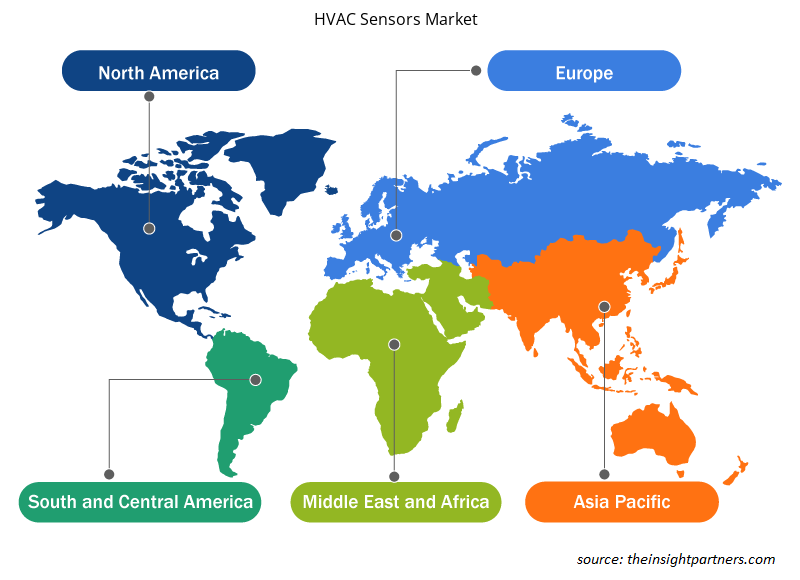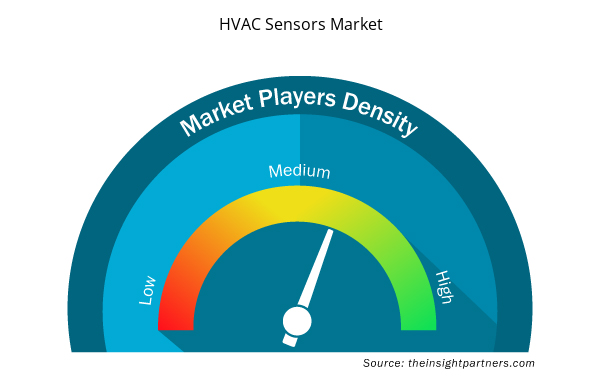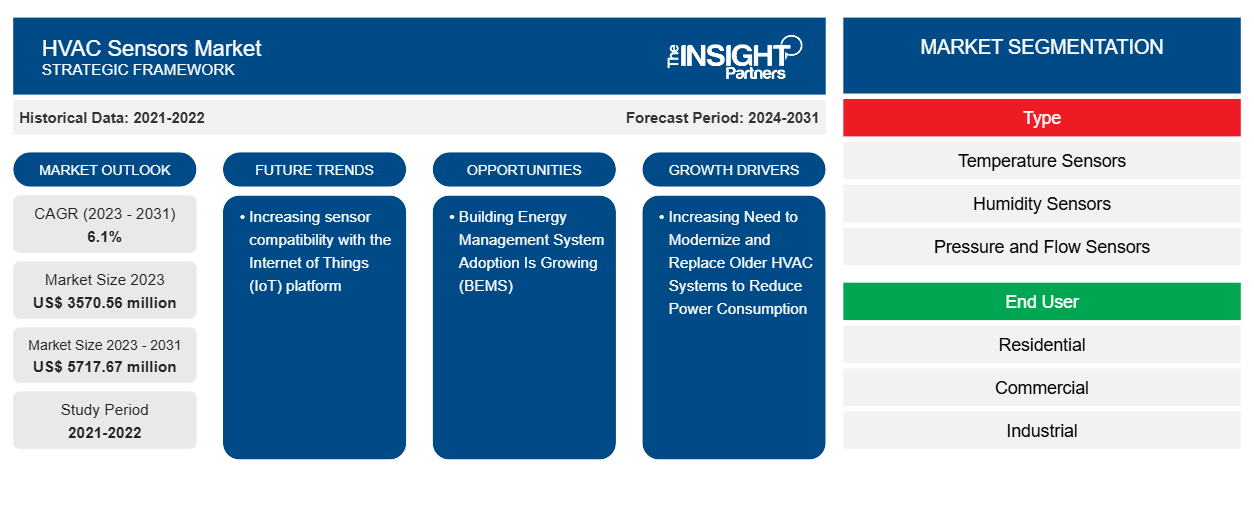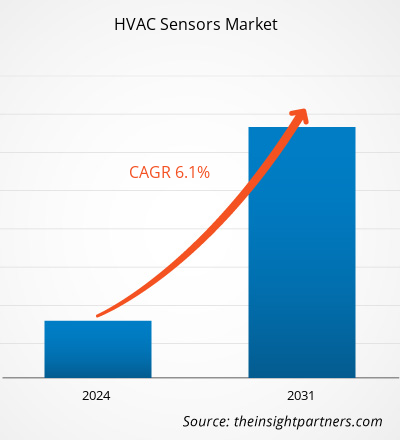预计到 2031 年,HVAC 传感器市场规模将从 2023 年的 35.7056 亿美元增至 57.1767 亿美元。预计 2023-2031 年市场复合年增长率为 6.1%。
传感器与物联网 (IoT) 平台的兼容性不断提高,很可能继续成为 HVAC 传感器市场的一个关键趋势。
HVAC 传感器市场分析
HVAC 传感器市场被多个行业所利用,例如商业、住宅、汽车等。如今,商业世界竞争激烈,因为领先的组织必须优先考虑环境保护、生产力、质量、安全和保障。在过去的几年里,HVAC 系统已广泛应用于世界各地的许多项目中。包括压力和温度传感器在内的众多传感器找到了使它们成为可能的用途。HVAC 系统为汽车和室内提供良好的空气质量和热舒适度。HVAC 传感器用于满足关注能源效率的各种最终用户的需求。它们有助于以低功耗提供适当维护的室内空间。
HVAC 传感器市场概览
HVAC 系统经常用于维护、控制,从而降低能源使用量。频率中包含一个模拟真实条件(如温度或目标环境)的音频设备。最重要的 HVAC 传感器类型有助于保持适当的温度,并通过区分输入温度与建筑物或室温来调整所需温度。对于包括工业、住宅和商业建筑在内的最终用户,HVAC 传感器可以管理、控制和监控各种操作,如气压、温度和质量。因此,由于节能的必要性,HVAC 传感器变得越来越普遍。
定制此报告以满足您的需求
您可以免费定制任何报告,包括本报告的部分内容、国家级分析、Excel 数据包,以及为初创企业和大学提供优惠和折扣
- 获取此报告的关键市场趋势。这个免费样品将包括数据分析,从市场趋势到估计和预测。
HVAC 传感器市场驱动因素和机遇
日益需要对旧式 HVAC 系统进行现代化改造和更换,以降低电力消耗
世界经济论坛估计,建筑物占能源相关二氧化碳排放量的 40% 以上,占全球能源消耗的近三分之一。世界绿色建筑委员会称,这些排放中约有三分之一是由建筑物运行所需的能源引起的,包括供暖、制冷和供电。据 Iota Communications 称,普通办公楼每年的电力支出约为 30,000 美元。在商业建筑中,暖通空调系统通常消耗的能源最多。根据美国能源部的估计,暖通空调系统通常占建筑物能源消耗的 35%。在疫情期间,对具有空气过滤特性的暖通空调系统的需求有所增加。更新的通风系统通过过滤空气和降低空气中的污染物(例如含病毒的颗粒)对公共卫生起着至关重要的作用。
建筑能源管理系统的采用正在增长(BEMS)
尽管暖通空调系统成本高昂,但建筑物离不开暖通空调系统。澳大利亚气候变化、能源、环境和水资源部估计,暖通空调系统平均消耗建筑物总能耗的 40%和基本能耗的 70%。基于计算机的自动化系统,即建筑能源管理系统 (BEMS),负责监控和调节建筑物内所有与能源相关的系统,包括机械和电气设备。通过实现对能源系统和供应的精确和自动化控制,能源管理可防止公司产生不必要的能源支出。Radiocrafts 称,借助 BEMS,公司可将目前的能源使用量减少 10% 至 30%。由于俄罗斯和乌克兰之间的冲突,欧盟的能源价格飞涨。因此,预计建筑能源管理系统 (BEMS) 将在预测期内为暖通空调参与者带来新的机会。
HVAC 报告细分分析
有助于得出 HVAC 分析的关键部分是类型和最终用户。
- 根据类型,HVAC 分为温度传感器、湿度传感器、压力和流量传感器、运动传感器、烟雾和气体传感器等。温度传感器部分在 2023 年占据了更大的市场份额。
根据最终用户,HVAC 传感器市场分为住宅、商业和工业。
暖通空调传感器市场份额(按地区)分析
HVAC 传感器市场报告的地理范围主要分为五个区域:北美、亚太地区、欧洲、中东和非洲以及南美/南美和中美洲。由于拥有大量现代化、发达的基础设施,包括商业建筑、工业设施和住宅物业,北美拥有最大的 HVAC 传感器和控制器市场份额。由于拥有复杂 HVAC 系统的建筑物众多,因此 HVAC 传感器和控制器的市场规模庞大。
HVAC 传感器市场区域洞察
Insight Partners 的分析师已详尽解释了预测期内影响 HVAC 传感器市场的区域趋势和因素。本节还讨论了北美、欧洲、亚太地区、中东和非洲以及南美和中美洲的 HVAC 传感器市场细分和地理位置。

- 获取 HVAC 传感器市场的区域特定数据
HVAC 传感器市场报告范围
| 报告属性 | 细节 |
|---|---|
| 2023 年的市场规模 | 35.7056亿美元 |
| 2031 年市场规模 | 57.1767亿美元 |
| 全球复合年增长率(2023 - 2031) | 6.1% |
| 史料 | 2021-2022 |
| 预测期 | 2024-2031 |
| 涵盖的领域 | 按类型
|
| 覆盖地区和国家 | 北美
|
| 市场领导者和主要公司简介 |
|
HVAC 传感器市场参与者密度:了解其对业务动态的影响
暖通空调传感器市场正在快速增长,这得益于终端用户需求的不断增长,而这些需求又源于消费者偏好的不断变化、技术进步以及对产品优势的认识不断提高等因素。随着需求的增加,企业正在扩大其产品范围,进行创新以满足消费者的需求,并利用新兴趋势,从而进一步推动市场增长。
市场参与者密度是指在特定市场或行业内运营的企业或公司的分布情况。它表明在给定市场空间中,相对于其规模或总市场价值,有多少竞争对手(市场参与者)存在。
在 HVAC 传感器市场运营的主要公司有:
- 西门子股份公司
- 艾默生电气公司
- 霍尼韦尔国际公司
- 江森自控有限公司
- 施耐德电气
- 泰科电子 (TE) 有限公司
免责声明:上面列出的公司没有按照任何特定顺序排列。

- 获取 HVAC 传感器市场顶级关键参与者概览
HVAC 传感器市场新闻和最新发展
HVAC 传感器市场通过收集主要和次要研究后的定性和定量数据进行评估,其中包括重要的公司出版物、协会数据和数据库。以下是言语和语言障碍市场的发展和策略列表:
- 2023 年 10 月,Sensata Technologies 宣布推出 Sensata Resonix RGD 传感器,这是首款获得 UL 认证的泄漏检测传感器,适用于供暖、通风和空调 (HVAC) 设备中使用的多种 A2L 制冷剂气体。新的泄漏检测传感器支持 HVAC 制造商向全球变暖影响较小的制冷剂过渡。(来源:Sensata Technologies,新闻稿)
- 2023 年 1 月,Third Reality 推出了一款温度和湿度传感器。(来源:Third Reality,新闻稿)
HVAC 传感器市场报告覆盖范围和交付成果
“HVAC 传感器市场规模和预测(2021-2031 年)”报告对市场进行了详细分析,涵盖以下领域:
- 范围内所有主要细分市场的全球、区域和国家层面的市场规模和预测
- 市场动态,如驱动因素、限制因素和关键机遇
- 未来的主要趋势
- 详细的 PEST/波特五力分析和 SWOT 分析
- 全球和区域市场分析涵盖关键市场趋势、主要参与者、法规和最新市场发展
- 行业格局和竞争分析,涵盖市场集中度、热点图分析、知名参与者和最新发展
- 详细的公司简介
- 历史分析(2 年)、基准年、预测(7 年)及复合年增长率
- PEST 和 SWOT 分析
- 市场规模价值/数量 - 全球、区域、国家
- 行业和竞争格局
- Excel 数据集


- Smart Mining Market
- Nurse Call Systems Market
- Sodium Bicarbonate Market
- Sports Technology Market
- Microcatheters Market
- Influenza Vaccines Market
- Health Economics and Outcome Research (HEOR) Services Market
- Single-Use Negative Pressure Wound Therapy Devices Market
- Radiopharmaceuticals Market
- Formwork System Market

Report Coverage
Revenue forecast, Company Analysis, Industry landscape, Growth factors, and Trends

Segment Covered
This text is related
to segments covered.

Regional Scope
North America, Europe, Asia Pacific, Middle East & Africa, South & Central America

Country Scope
This text is related
to country scope.
常见问题
The increasing need to modernize and replace older HVAC systems to reduce power consumption and the growing building energy management system adoption are the major factors that propel the global HVAC sensors market.
The global HVAC sensors market was estimated to be US$ 3570.56 million in 2023 and is expected to grow at a CAGR of 6.1 % during the forecast period 2023 - 2031.
Increasing sensor compatibility with the Internet of Things (IoT) platform is anticipated to play a significant role in the global HVAC sensors market in the coming years.
The key players holding majority shares in the global HVAC sensors market are Siemens AG, Emerson Electric Co., Honeywell International Inc., Johnson Controls, Inc., and Schneider Electric.
The global HVAC sensors market is expected to reach US$ 5717.67 million by 2031.
Trends and growth analysis reports related to Electronics and Semiconductor : READ MORE..
The Insight Partners performs research in 4 major stages: Data Collection & Secondary Research, Primary Research, Data Analysis and Data Triangulation & Final Review.
- Data Collection and Secondary Research:
As a market research and consulting firm operating from a decade, we have published and advised several client across the globe. First step for any study will start with an assessment of currently available data and insights from existing reports. Further, historical and current market information is collected from Investor Presentations, Annual Reports, SEC Filings, etc., and other information related to company’s performance and market positioning are gathered from Paid Databases (Factiva, Hoovers, and Reuters) and various other publications available in public domain.
Several associations trade associates, technical forums, institutes, societies and organization are accessed to gain technical as well as market related insights through their publications such as research papers, blogs and press releases related to the studies are referred to get cues about the market. Further, white papers, journals, magazines, and other news articles published in last 3 years are scrutinized and analyzed to understand the current market trends.
- Primary Research:
The primarily interview analysis comprise of data obtained from industry participants interview and answers to survey questions gathered by in-house primary team.
For primary research, interviews are conducted with industry experts/CEOs/Marketing Managers/VPs/Subject Matter Experts from both demand and supply side to get a 360-degree view of the market. The primary team conducts several interviews based on the complexity of the markets to understand the various market trends and dynamics which makes research more credible and precise.
A typical research interview fulfils the following functions:
- Provides first-hand information on the market size, market trends, growth trends, competitive landscape, and outlook
- Validates and strengthens in-house secondary research findings
- Develops the analysis team’s expertise and market understanding
Primary research involves email interactions and telephone interviews for each market, category, segment, and sub-segment across geographies. The participants who typically take part in such a process include, but are not limited to:
- Industry participants: VPs, business development managers, market intelligence managers and national sales managers
- Outside experts: Valuation experts, research analysts and key opinion leaders specializing in the electronics and semiconductor industry.
Below is the breakup of our primary respondents by company, designation, and region:

Once we receive the confirmation from primary research sources or primary respondents, we finalize the base year market estimation and forecast the data as per the macroeconomic and microeconomic factors assessed during data collection.
- Data Analysis:
Once data is validated through both secondary as well as primary respondents, we finalize the market estimations by hypothesis formulation and factor analysis at regional and country level.
- Macro-Economic Factor Analysis:
We analyse macroeconomic indicators such the gross domestic product (GDP), increase in the demand for goods and services across industries, technological advancement, regional economic growth, governmental policies, the influence of COVID-19, PEST analysis, and other aspects. This analysis aids in setting benchmarks for various nations/regions and approximating market splits. Additionally, the general trend of the aforementioned components aid in determining the market's development possibilities.
- Country Level Data:
Various factors that are especially aligned to the country are taken into account to determine the market size for a certain area and country, including the presence of vendors, such as headquarters and offices, the country's GDP, demand patterns, and industry growth. To comprehend the market dynamics for the nation, a number of growth variables, inhibitors, application areas, and current market trends are researched. The aforementioned elements aid in determining the country's overall market's growth potential.
- Company Profile:
The “Table of Contents” is formulated by listing and analyzing more than 25 - 30 companies operating in the market ecosystem across geographies. However, we profile only 10 companies as a standard practice in our syndicate reports. These 10 companies comprise leading, emerging, and regional players. Nonetheless, our analysis is not restricted to the 10 listed companies, we also analyze other companies present in the market to develop a holistic view and understand the prevailing trends. The “Company Profiles” section in the report covers key facts, business description, products & services, financial information, SWOT analysis, and key developments. The financial information presented is extracted from the annual reports and official documents of the publicly listed companies. Upon collecting the information for the sections of respective companies, we verify them via various primary sources and then compile the data in respective company profiles. The company level information helps us in deriving the base number as well as in forecasting the market size.
- Developing Base Number:
Aggregation of sales statistics (2020-2022) and macro-economic factor, and other secondary and primary research insights are utilized to arrive at base number and related market shares for 2022. The data gaps are identified in this step and relevant market data is analyzed, collected from paid primary interviews or databases. On finalizing the base year market size, forecasts are developed on the basis of macro-economic, industry and market growth factors and company level analysis.
- Data Triangulation and Final Review:
The market findings and base year market size calculations are validated from supply as well as demand side. Demand side validations are based on macro-economic factor analysis and benchmarks for respective regions and countries. In case of supply side validations, revenues of major companies are estimated (in case not available) based on industry benchmark, approximate number of employees, product portfolio, and primary interviews revenues are gathered. Further revenue from target product/service segment is assessed to avoid overshooting of market statistics. In case of heavy deviations between supply and demand side values, all thes steps are repeated to achieve synchronization.
We follow an iterative model, wherein we share our research findings with Subject Matter Experts (SME’s) and Key Opinion Leaders (KOLs) until consensus view of the market is not formulated – this model negates any drastic deviation in the opinions of experts. Only validated and universally acceptable research findings are quoted in our reports.
We have important check points that we use to validate our research findings – which we call – data triangulation, where we validate the information, we generate from secondary sources with primary interviews and then we re-validate with our internal data bases and Subject matter experts. This comprehensive model enables us to deliver high quality, reliable data in shortest possible time.


 获取此报告的免费样本
获取此报告的免费样本